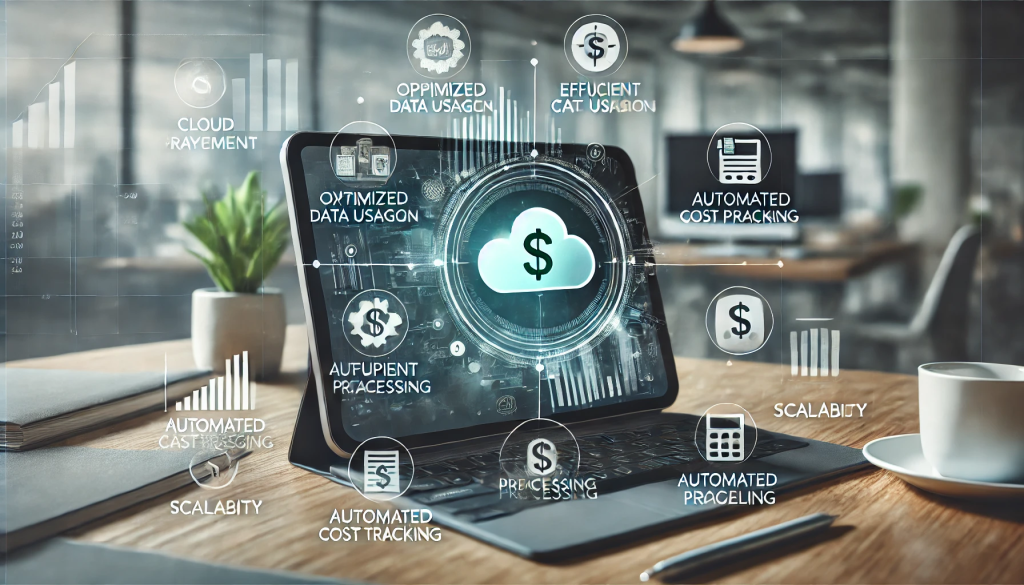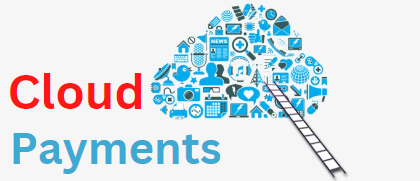Strategies for Reducing Costs with Cloud Payment Systems
Cloud payment systems have become essential in the digital economy, enabling businesses to handle transactions seamlessly, scale operations efficiently, and meet customer demands for swift, secure payments. However, the costs associated with cloud-based payment systems can quickly add up, especially as transaction volumes and data storage requirements grow. To mitigate expenses while maintaining optimal performance, businesses need well-defined strategies that align with their operational needs and financial goals.
This comprehensive guide outlines effective strategies for reducing costs associated with cloud payment systems. From optimizing data storage and choosing cost-effective providers to leveraging automation and implementing security measures efficiently, each section offers actionable insights to help you balance costs with quality service.
Understanding Cost Factors in Cloud Payment Systems

Reducing expenses starts with a clear understanding of the main cost drivers in cloud payment systems. Businesses can better manage these expenses by identifying the factors that contribute to high operational costs and recognizing which elements can be optimized.
Subscription Fees and Licensing Costs
Subscription fees and licensing are foundational expenses for cloud payment systems, typically structured on a monthly or annual basis. These costs vary depending on the provider, the plan selected, and additional features.
Comparing Subscription Plans
Cloud payment providers often offer a range of plans, from basic to enterprise-level, each with different features. Businesses should carefully evaluate their needs before selecting a plan to avoid overpaying for features they may not use.
Licensing for Additional Users and Features
Licensing costs can also vary based on the number of users and any extra functionality included in the subscription. Opting for a scalable plan that allows adjustments as business needs change can help prevent paying for unused resources.
Transaction Fees and Processing Costs
Every transaction processed through cloud systems typically incurs a fee, which can add up with higher volumes. Transaction fees are charged per transaction and include processing fees that go to the payment processor and interchange fees paid to card networks.
Bulk Transaction Discounts
Some providers offer discounts for high transaction volumes. Businesses processing a large number of payments may benefit from negotiating bulk discounts with providers, which can result in substantial savings.
Alternative Payment Options
Encouraging customers to use alternative payment methods, such as ACH transfers over credit card payments, can help reduce the overall cost since ACH transactions generally incur lower fees.
Strategies for Cost Reduction in Cloud Payment Systems

With an understanding of the cost components, businesses can employ targeted strategies to reduce expenses without compromising on the quality of service.
Selecting a Cost-Effective Cloud Payment Provider
Choosing the right provider is essential for cost management. With many providers offering various pricing structures, features, and levels of service, comparing these aspects thoroughly can uncover opportunities for savings.
Evaluating Pricing Transparency and Flexibility
Providers with transparent pricing models are easier to work with, as they outline potential costs upfront. Opt for a provider with flexible pricing, especially if your business has fluctuating payment volumes, to avoid being locked into high fees during low-activity periods.
Negotiating Long-Term Contracts
For businesses confident in their choice of provider, long-term contracts can offer lower rates compared to month-to-month plans. This stability can provide both cost savings and budgeting predictability.
Optimizing Data Storage and Management
Data storage in cloud payment systems is necessary for record-keeping and regulatory compliance, but storage fees can increase quickly as data accumulates. Optimizing data storage and management can help control these costs.
Implementing Tiered Storage Solutions
Cloud providers often offer tiered storage options, where frequently accessed data is kept on high-speed (and more expensive) storage, while infrequently accessed data is stored on cheaper, slower storage. Using tiered storage allows businesses to allocate data storage based on access needs, reducing expenses without sacrificing accessibility.
Data Retention Policies
Establishing clear data retention policies helps reduce unnecessary storage costs. Regularly archiving or deleting outdated or irrelevant data prevents storage costs from accumulating and keeps the system efficient.
Leveraging Automation for Efficiency
Automation tools streamline processes that would otherwise require manual intervention, ultimately reducing labor costs and improving accuracy.
Automated Transaction Reconciliation
Automating the reconciliation process helps ensure that transactions are accounted for accurately and without the need for time-consuming manual oversight. This reduces labor costs associated with transaction management.
AI for Fraud Detection
Artificial intelligence (AI) can identify suspicious transactions in real time, helping businesses prevent fraud without requiring a dedicated fraud team. This proactive approach reduces potential losses from chargebacks and fraud.
Efficient Resource Management for Cost Savings

Effective resource management enables businesses to make the most of their cloud payment systems while avoiding unnecessary expenses.
Implementing Pay-as-You-Go Models
Pay-as-you-go pricing models can be beneficial for businesses with variable payment volumes, as they allow companies to only pay for the resources used.
Flexible Scaling Options
Scalable resources allow businesses to increase or decrease capacity based on transaction volume, ensuring that costs are aligned with actual usage. This flexibility prevents overpaying during low-volume periods.
Real-Time Usage Monitoring
Monitoring usage patterns in real time enables businesses to adjust resource allocation proactively, avoiding excess charges and maintaining cost efficiency.
Optimizing Bandwidth and Server Usage
Managing server and bandwidth usage carefully is crucial to avoid excess data processing costs.
Load Balancing
Load balancing helps distribute incoming data traffic across multiple servers, preventing overloads and reducing the need for additional server capacity during peak times.
Bandwidth Throttling During Off-Peak Hours
Throttling bandwidth usage during non-peak hours lowers data transfer costs and ensures resources are optimized without impacting user experience during high-demand periods.
Implementing Cost-Effective Security Measures

Security is a non-negotiable aspect of cloud payment systems, but the cost of maintaining security can be reduced with strategic measures.
Multi-Layered Security Approach
A multi-layered security approach that incorporates encryption, firewalls, and user authentication provides strong protection without requiring expensive, standalone security solutions.
Cloud-Based Security Tools
Many cloud providers offer built-in security tools, such as encryption and access control, as part of their subscription packages. Utilizing these tools prevents the need for additional investments in third-party security systems.
Conducting Regular Security Audits
Regular security audits identify potential vulnerabilities and ensure that security measures are functioning effectively, preventing data breaches that could result in financial loss and reputational damage.
Automating Compliance
Meeting regulatory standards like PCI DSS is crucial for cloud payment systems but can be costly. Automation simplifies compliance and minimizes manual intervention.
Automated Compliance Reporting
Automated tools track and document compliance requirements, reducing the need for manual checks and ensuring that businesses meet industry standards efficiently.
Real-Time Compliance Monitoring
Real-time monitoring identifies non-compliance issues before they escalate, allowing businesses to take corrective action and avoid penalties.
Best Practices for Managing Costs in Cloud Payment Systems

Implementing best practices in cost management helps businesses sustain cost-effective cloud payment systems over time.
Conducting Regular Cost Audits
Regular cost audits allow businesses to track expenses, detect hidden costs, and adjust budgeting strategies as needed.
Monthly Statement Reviews
Reviewing monthly statements helps identify any unexpected charges, which can then be addressed with the provider to prevent recurring costs.
Quarterly Cost-Effectiveness Assessments
Quarterly assessments provide a comprehensive overview of expenses, helping businesses determine if their cloud payment provider and usage align with their financial objectives.
Training Employees on Cost Management Practices
Educating employees on cost management best practices encourages them to make decisions that can help reduce unnecessary expenses.
Resource Management Training
Training employees in resource management helps them understand the importance of using only necessary resources, which can contribute to reducing expenses.
Building a Cost-Conscious Culture
Promoting a culture of cost-consciousness motivates employees to seek cost-saving opportunities in their daily operations, leading to sustainable expense management.
FAQs on Reducing Costs in Cloud Payment Systems
Q1: Can cloud payment system costs be reduced without compromising security?
Yes, a multi-layered approach to security using cloud-based tools, regular audits, and automation can maintain robust security at a lower cost.
Q2: Are long-term contracts beneficial for reducing cloud payment system expenses?
Long-term contracts often offer discounted rates, but they require a commitment. Month-to-month plans may offer flexibility, especially if business needs fluctuate.
Q3: What are tiered storage solutions, and how do they reduce costs?
Tiered storage solutions store frequently accessed data on faster, more expensive storage and less accessed data on slower, cheaper storage, optimizing costs.
Q4: How does automation impact costs in cloud payment systems?
Automation reduces manual processes, saving labor costs and improving operational efficiency. It also ensures accuracy, reducing costs from potential errors.
Q5: Can businesses negotiate fees with cloud payment providers?
Yes, providers often negotiate for high transaction volumes or long-term contracts. Businesses should ask for discounts or customized plans to match their needs.
Q6: How often should cost audits be conducted?
Monthly statement reviews and quarterly comprehensive audits are recommended to ensure that cloud payment costs remain aligned with business goals.
Conclusion
Selecting a cost-effective provider, carefully managing subscription plans, and encouraging a culture of cost-consciousness among employees are key steps in managing cloud payment expenses. By balancing robust security measures, compliance, and efficiency, businesses can achieve a streamlined payment processing system without overextending their budgets.
In addition, ongoing efforts—such as conducting regular cost audits, negotiating fees with providers, and educating staff on resource management—ensure long-term sustainability in a business’s cloud payment operations. Automation and AI tools further enhance efficiency, enabling businesses to reduce manual intervention costs and enhance fraud detection capabilities.
Ultimately, reducing costs in cloud payment systems is an ongoing process. As technology evolves and payment volumes fluctuate, businesses must remain adaptable, assessing their strategies and system usage regularly to maintain cost-effectiveness. With proactive management and strategic adjustments, companies can make the most of their cloud payment systems, ensuring secure, scalable, and cost-effective payment solutions that support business growth and financial health.










